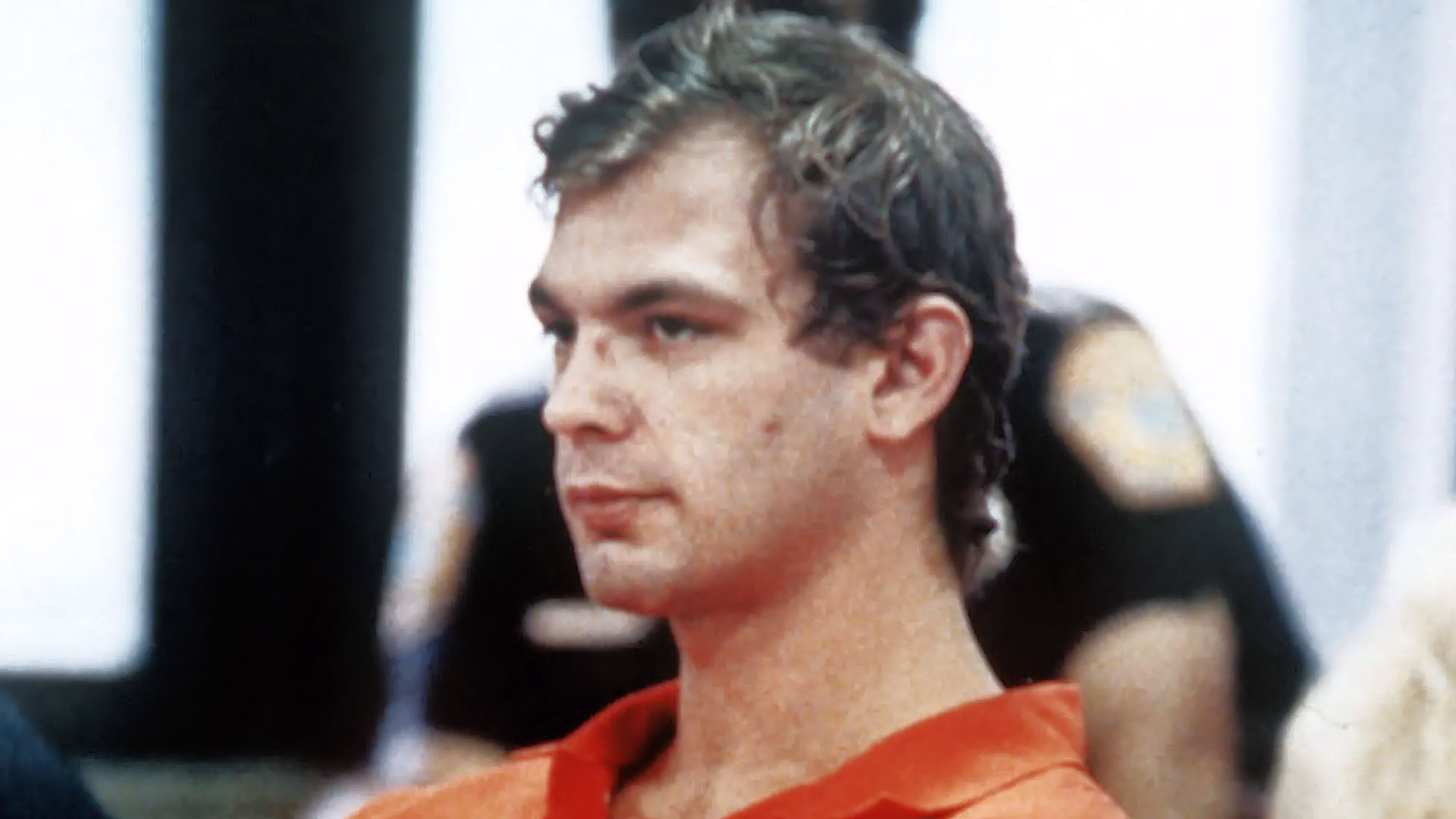Jeffrey Dahmer
In the history of modern true crime, few names send a chill down the spine like Jeffrey Dahmer. Known as the “Milwaukee Cannibal” or the “Milwaukee Monster”, Dahmer’s crimes stunned the world, not just for their brutality, but for the deeply disturbing nature of his compulsions.
Between 1978 and 1991, Dahmer murdered 17 young men and boys. His crimes involved necrophilia, dismemberment, and cannibalism. But perhaps most chilling of all was his ability to hide in plain sight, with his polite manner, soft-spoken nature, and clean-cut appearance masking the horror that lay inside his apartment.
This is the story of Jeffrey Dahmer. It is a tale of isolation, compulsion, failure, and unimaginable darkness.
A Troubled Beginning
Jeffrey Lionel Dahmer was born on May 21, 1960, in Milwaukee, Wisconsin. His childhood was not defined by outright abuse or poverty, but by emotional neglect and instability. His parents, Lionel and Joyce Dahmer, had a turbulent marriage filled with arguments and mental health struggles. Jeffrey was a quiet, withdrawn child who showed early signs of emotional detachment.
By his early teens, Dahmer was fascinated by death. He began collecting roadkill and experimenting with animal bones, driven by his curiosity about anatomy. This interest, far from scientific, bordered on obsession. He later admitted that his fantasies of dominance and control began during puberty, blending his sexuality with violence and power.
In 1978, shortly after graduating high school, Dahmer committed his first murder. He picked up a hitchhiker named Steven Hicks, brought him home, and bludgeoned him with a dumbbell. Then he dismembered the body and buried the remains in his backyard. He was just 18 years old.
After that, Dahmer didn’t kill again for nearly a decade.
A Deadly Escalation
Throughout the 1980s, Dahmer struggled with alcohol addiction, social isolation, and his increasingly violent urges. He had brief stints in the army and various jobs, but none of them stuck. In 1987, while staying at a hotel in Milwaukee, Dahmer killed again, this time a man named Steven Tuomi. From that point forward, the killings became more frequent.
He lured victims, typically young men of colour, into his home or hotel rooms, promising money, alcohol, or companionship. Most of them were drugged before being strangled. What he did after their deaths is what truly shocked the world.
Dahmer engaged in acts of necrophilia. He posed and photographed the bodies, sometimes keeping skulls or other parts as trophies. He attempted to preserve corpses using chemicals. In some cases, he boiled the flesh off bones or stored body parts in his fridge or freezer. He even confessed to eating parts of his victims, reportedly out of a desire to “make them part of him.”
In 1991 alone, he murdered eight men. The killings were escalating rapidly, and the rituals were becoming more elaborate and terrifying.
Missed Chances
What makes Dahmer’s case even more disturbing is how often authorities came close to stopping him.
In May 1991, a 14-year-old boy named Konerak Sinthasomphone was found running through the streets, naked and dazed. Neighbours called the police. Dahmer convinced the officers that the boy was his 19-year-old lover and that they’d had a fight. Incredibly, despite the protests of bystanders and Konerak’s visible distress, the officers returned the boy to Dahmer’s apartment.
Konerak was murdered within the hour.
Later, those same officers were suspended for their mishandling of the case. It was a stark example of systemic failure, from the police’s dismissal of a gay relationship to their reluctance to believe a person of colour might be in danger.
This wasn’t the only missed opportunity. Neighbours frequently complained about strange smells, noises, and behaviour from Dahmer’s apartment. But nothing was done.
He was able to continue killing without suspicion, protected, in part, by his outward normality and the system’s blind spots.
The Discovery
On July 22, 1991, Dahmer invited 32-year-old Tracy Edwards to his apartment. Edwards became alarmed when Dahmer tried to handcuff him and threatened him with a knife. He managed to escape and flagged down the police.
When officers entered the apartment, they discovered a scene of unimaginable horror.
Photographs of dismembered bodies. Human skulls and bones. A severed head in the fridge. A heart and other organs in the freezer. A barrel of acid containing decomposing body parts. And written plans for what Dahmer described as a “shrine” made from human remains.
The officers had stumbled upon the private hell Dahmer had maintained for years.
He was arrested on the spot.
Trial and Sentencing
In January 1992, Jeffrey Dahmer stood trial for 15 counts of murder. He pleaded guilty but insane, claiming his compulsions were beyond his control. The court, however, found him legally sane and entirely responsible for his actions.
He was sentenced to 15 consecutive life terms in prison, totaling over 900 years behind bars. A few months later, he was sentenced to a 16th life term for a murder he’d committed in Ohio.
In prison, Dahmer reportedly found religion. He was baptised, expressed remorse, and even cooperated with interviews and investigators.
But not everyone believed his contrition.
On November 28, 1994, Dahmer was beaten to death in prison by another inmate, Christopher Scarver. His death ended a case that had haunted the country, but it didn’t end the questions.
Aftermath and Legacy
Jeffrey Dahmer’s crimes forced America to confront its darkest fears. His murders weren’t just about violence; they were about control, dominance, and identity. The fact that many of his victims were gay men of colour sparked discussions about marginalisation, policing, and the lack of attention to missing persons from minority communities.
His case also led to deeper discussions about mental illness, sexuality, and criminal justice. Could he have been stopped earlier? Were the signs missed or ignored? And what happens when someone hides evil behind a polite smile and a tidy apartment?
Pop culture has never let go of the Dahmer case. Books, films, and television series have attempted to understand him, some more sensitively than others. In 2022, a Netflix series titled Monster: The Jeffrey Dahmer Story renewed interest in the case, sparking both praise and criticism for how it portrayed the victims and the trauma they endured.
Many families of Dahmer’s victims have spoken out against these adaptations, urging people to remember the real human cost of his crimes. These were not characters. They were sons, brothers, friends.
A Killer Like No Other
Jeffrey Dahmer didn’t fit the typical image of a monster. He wasn’t a shadowy stranger lurking in an alleyway. He was the quiet guy next door, the one who helped his neighbours with groceries and listened to music late into the night.
But behind that façade was one of the most disturbing killers in modern history. A man who turned his inner emptiness into a series of gruesome rituals. A man whose hunger for control led him down a path of horror that still shakes us today. Dahmer’s name is now etched into the cultural memory of America, not because we glorify him, but because we’re still trying to understand how someone so ordinary could commit acts so unspeakable.
Jeffrey Dahmer FAQ
Dahmer was an American serial killer and sex offender who murdered 17 young men and boys between 1978 and 1991.
He was arrested in 1991 when a potential victim escaped and led police to Dahmer’s apartment, revealing human remains and photographic evidence.
His crimes involved not just murder, but also cannibalism, necrophilia, and grotesque dismemberment.
He was sentenced to life in prison but was killed by a fellow inmate in 1994.






